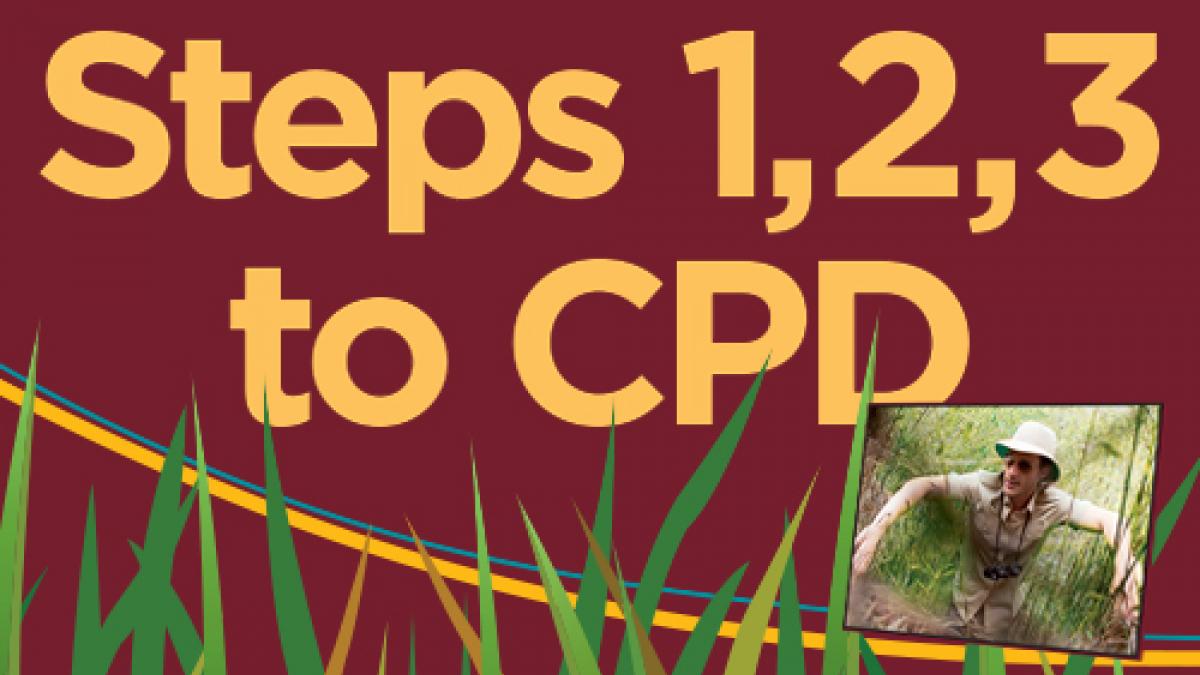To celebrate the 21st anniversary of the creation of the CSP’s associate membership category, professional adviser Nina Paterson dedicates a CPD article to support workers.

Associate members have made a significant and positive contribution to the physio workforce, the teams they are a part of, and, ultimately, to patient care. As they celebrate their 21st anniversary as CSP members, we are recognising their input with a continuing professional development (CPD) article dedicated to them.
Have you seen the ‘talking wall’ on the CSP website? You’ll find short interviews with 21 members who are (or were at one stage in their careers) support workers. Almost all talk about learning, knowledge and CPD (without being bribed by any member of my team!). I wanted to draw on their experience and advice so the following points come straight from your peers.
One thing that struck me as I read through their comments people highlighted the importance of making the most of every opportunity. These came up in various ways. Danielle Wright, for example, said that formal study put her in a great position to go for a band 4 job, which was later re-banded to 5). Louise Wright talks about becoming a CSP steward, while Marie Groves responded to a request for associate members to talk about their experiences of CPD. Several members – Elizabeth Chisoko and Angela Hall, for example – made the most of the funding available from the CSP Charitable Trust education awards to help them with their studies. And for the final word on the topic of exploiting opportunities, read what Mags Stevenson had to say here.
Growing opportunities
What’s also clear is how much creativity and resourcefulness is out there. Marie Groves is absolutely right –‘CPD isn’t always about external courses’ Meanwhile, Richard O’Connell and his therapies manager looked for ways to develop support worker roles and Richard now manages a team of 22 therapy assistants and clerical staff. He contributed to the workforce development theme at last week’s Physiotherapy UK 2015. Richard gave delegates some pointers on how to strengthen and diversify the workforce, develop roles and invest in individuals.
Angela Brett has put her skills to good use in a different way, as a learning champion. She made such an impression on one of the physiotherapy students by helping them get to grips with the ePortfolio that the student was inspired to become a CSP learning champion as well. If you are looking for ideas or inspiration, you’ll find plenty on the talking wall.
As associates you can, and do, work in a range of settings, and it’s clear from the examples in the talking wall that new opportunities to grow, lead and manage are opening up. If you are going to make the most of opportunities or find creative ways to generate them for yourself, you’re going to need to be able to decide which opportunities to seek out. We’ve developed a new resource Steps 1,2,3 for CPD to help you seize them and plan your course of action. The will help you evidence your strengths, identify your CPD needs, explore your options, and develop your own personal strategies. My colleague Rosalind Stroud, learning and development officer, put the resource together and is introducing the CPD activity this week. All that remains to say, is this: here’s to the next 21 years! fl
CPD activity: a journey of 1,000 miles begins with a single step
This month’s activity is straightforward – take a look at the resource and start using it!
Steps 1, 2, 3 for CPD (see further information, below) was developed to help you get going with your CPD. Whatever you want to do in your career, Steps 1, 2, 3 should help you begin to demonstrate and develop the skills, knowledge and expertise that are relevant to your role and development plans. As well as guiding you through the process for planning your learning, there are links to additional resources and activities to follow up. Once you’ve taken the steps, you will have acquired the skills in how to approach your CPD, and will have the tools and know-how to plan further learning activities.
A journey of 1,000 miles begins with a single step. So just imagine how far you could get by taking a mere three!
- Rosalind Stroud, CSP learning and development officer
Further information
Talking wall
If you haven’t had a chance to visit the ‘talking wall’ yet, you can find it using the following link.
CSP Charitable Trust education awards
To find out what financial support is available from the CSP Charitable Trust, visit the Charitable Trust awards page here.
Steps 1,2,3 for CPD
You’ll need this for this week’s CPD activityhere.
CSP ePortfolio
When you joined the CSP, an account was automatically created for you to store your CPD activities. If you haven’t yet accessed it, all you need to do is log in as normal to the CSP website and view the CSP e-portfiliohere.
If you need additional support, help is available by emailing pebblepad@csp.org.uk
Learning champions
Learning champions help their colleagues to learn and develop through a range of activities.
Author
Nina PattersonNumber of subscribers: 1




































